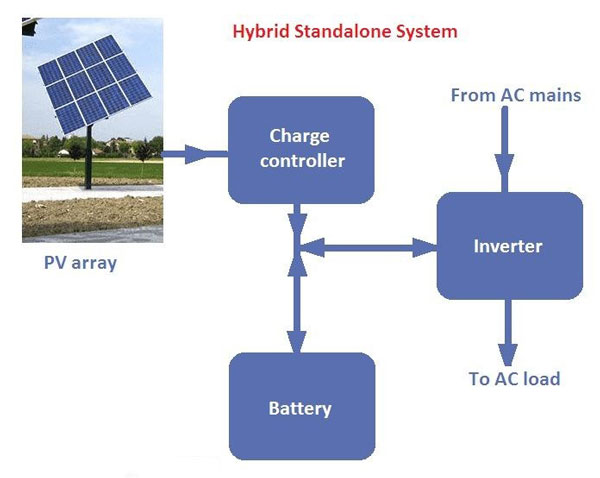In a solar photovoltaic power generation system, solar energy is directly converted into electricity. This makes the system more convenient and compact compared to thermal methods of solar energy conversion.
Solar cell technology is the fastest growing power generation technology in the world. Because of this, solar cells with conversion efficiencies in excess of 40% become available.
The working principle of solar panels is to use the photoelectric effect, also known as the photovoltaic effect. Photovoltaic effect refers to the phenomenon that an object generates electromotive force due to the absorption of photons. The photovoltaic effect occurs when sunlight or other light strikes the PN junction of a semiconductor. The photovoltaic effect causes a voltage to appear on both sides of the PN junction, which is called the photovoltaic voltage. By shorting the PN junction, a current will flow.
Photovoltaic cells are also called solar cells. It is a semiconductor device that uses the photoelectric effect to convert sunlight into direct current. Virtually all solar cells are photodiodes made of semiconductor materials such as silicon.
Solar cells work in three steps:
- Photons from sunlight hit the solar cell and are absorbed by the semiconductor material.
- Negatively charged electrons are separated from their atoms and begin to flow in the same direction to generate an electric current.
- A typical silicon solar cell can generate voltages up to 0.5 V and currents up to 6 A. Therefore, its maximum power is 3 W.
Since the output of a single solar cell is very small, a large number of solar cells are connected to each other to form a solar module, the combination of solar modules is called a panel, and the combination of panels is called a solar cell array. This is done to obtain the desired power output from the photovoltaic system.
When solar cells are connected in series, their voltage increases as much as the number of cells connected in series. But the current remains the same.
When cells are connected in parallel, the voltage remains constant, the same as one cell, but the current is multiplied. Batteries, modules or panels can only be connected in parallel if they have the same voltage.
The main components of a solar photovoltaic system
Blocking diode
The SPV array is connected to the battery. During sunny hours, the panels generate electricity to charge the battery. But when there is no sunlight or at night, the current will try to flow in the opposite direction, i.e. from the cell to the array. This could damage the array. Therefore, to avoid this reverse flow of current, blocking diodes are used.
Stabilizer
The voltage output of photovoltaic panels varies according to the intensity of sunlight. This causes fluctuations in the load current. A voltage regulator will ensure that voltage fluctuations are kept within specified limits.
Inverter
Since the electricity produced by the PV array is direct current, an inverter is used to convert it to alternating current so that we can utilize it easily. Inverter units installed with different protection devices ensure the safety of the system and automatically switch the load and available power.
Battery
These are used to store solar energy. They are the most important components of a solar photovoltaic system. The success of a solar photovoltaic system largely depends on the battery storage system.
Battery controller
These are the devices that ensure battery charging is done in the right way. They control the charging current and protect the battery from overcharging. This is done by constantly monitoring battery current, voltage and temperature.
Types of Solar Photovoltaic Systems

Stand-alone system
In this system, power is supplied to the load without using any public grid or connection to any other system, and can operate autonomously and independently. It is used for backup power which is very expensive to connect to the grid. It can be used to power a DC load, or it can be used to power an AC load using an inverter.
There are different types of standalone systems. But the most commonly used are hybrid stand-alone systems. In a hybrid stand-alone system, one or more sources are used in addition to the PV panels. Sources such as generators, fuel cells, AC power can be used in conjunction with photovoltaic arrays. Hence reducing the reliance on any single source. This also reduces the battery storage capacity and size of the photovoltaic array.
Grid-connected system
In this system, the electrical energy generated by the photovoltaic array is directly supplied to the grid or to the AC load. When power generation exceeds the demand of the load, it is supplied to the commercial grid. Thus, the system becomes part of a larger network. In this system, power is fed to the grid when the power generated by the PV array exceeds local load requirements. An energy meter is used to monitor the energy provided.
